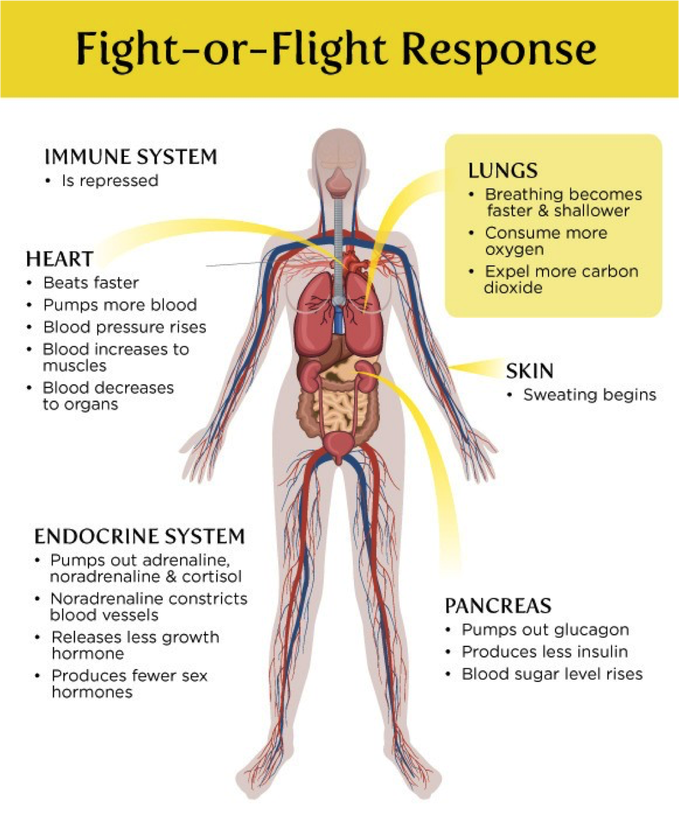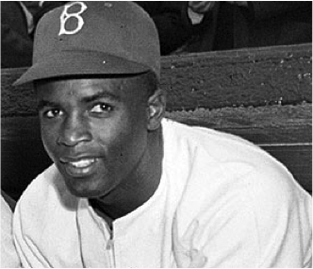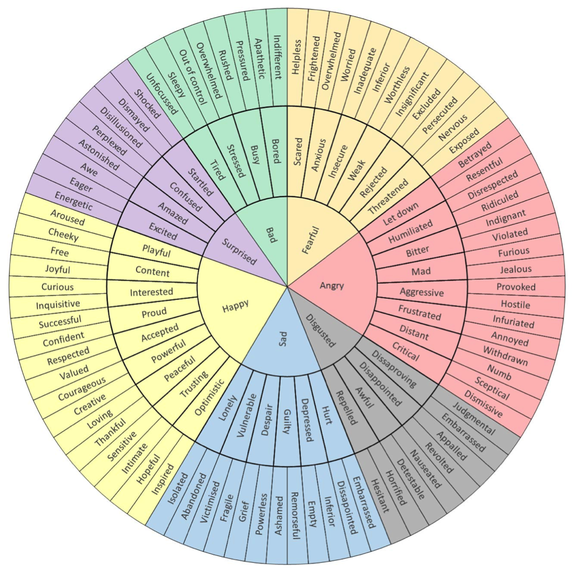De-Escalation Course and Guide
Files may not display properly on mobile devices.
Please contact us for editable documents
Please contact us for editable documents
|
|
| ||||||||||||||||||||||||||||||
What is De-Escalation?
- A variety of psychosocial techniques aimed at reducing violent and/or disruptive behavior.
- Skills used to reduce/eliminate the risk of violence during an escalation phase through verbal and non-verbal communications.
- Less authoritative, less controlling, less confrontational approach to gain more control.
Fight, Flight, or Freeze
This response is our body's way of coping with stress or danger. Look at the following list of flight, fight, freeze responses below, possible signs that someone is no longer feeling safe and might be at risk. This is not a complete list but may help to identify what you should be watching for:
This response is our body's way of coping with stress or danger. Look at the following list of flight, fight, freeze responses below, possible signs that someone is no longer feeling safe and might be at risk. This is not a complete list but may help to identify what you should be watching for:
|
Fight
|
Flight
|
Freeze
|
Respect and Dignity
Respect and dignity should be the first step to de-escalation; well it should be the first process to every encounter in your professional life. Respect is probably the easiest to describe and one that you most often do. Professionally we give respect to people.
A more difficult question would be what is dignity? It is a word that make us all think about the meaning. How do you give one dignity? Is it something you can give? I think of dignity as it relates to a situation. If someone is in public having a panic attack and you have to ask some personal information you may offer to talk to them in private, giving them dignity to their situation.
These two concepts are easy to say we are going to do but when it comes down to the actual doing it can be difficult. We are often over worked with lake of sleep and it can be hard to have empathy towards everyone we encounter. These are skills that you must work on daily to succeed.
A more difficult question would be what is dignity? It is a word that make us all think about the meaning. How do you give one dignity? Is it something you can give? I think of dignity as it relates to a situation. If someone is in public having a panic attack and you have to ask some personal information you may offer to talk to them in private, giving them dignity to their situation.
These two concepts are easy to say we are going to do but when it comes down to the actual doing it can be difficult. We are often over worked with lake of sleep and it can be hard to have empathy towards everyone we encounter. These are skills that you must work on daily to succeed.
|
“I'm not concerned with your liking or disliking me... All I ask is that you respect me as a human being.” Jackie Robinson |
|
Respect
|
Dignity
|
Active Listening Skills
Safety, De-stigmatization, and Resources should be kept in mind when using Active Listening Skills. Keeping dignity and respect in mind will help with rapport building.
Definitions:
Definitions:
- A communication technique that a listener uses to show the speaker that they are paying attention and understand the message that is being relayed.
- Active listening is a communication technique used in counseling, training and conflict resolution, which require the listener to feed back what they hear to the speaker.
Why Active Listening:
Empathy vs Sympathy
Using active listening skills and techniques can help the listener gain a better understanding of the situation that the speaker is going through. This helps relay to the speaker that the listener has empathy towards the situation. The listener gains more information by using skills and has the ability to retain the information more effectively. Rapport building in heightened emotional states is important because it can help you with gaining compliance through influence.
Clinical evidence and research suggest that active listening is an effective was to create behavioral change in others (Rogers, C., & Dymond, R., 1954). When listened to by another, individuals tend to evaluate their own feelings and thoughts, allowing them to have more clarity. This allows them to become better problem solvers and more accepting of someone else’s point of view. Showing empathy allows the individual to have less fear of being criticized and open up to a realistic appraisal of their own position (Noesner, G., & Webster, M., 1997).
The use of active listening skills helps create an empathic relationship between the officer and the subject. Building this empathy can help create rapport, which in time can be used to influence the person’s behavior. Using this approach in crisis intervention shows an effort in a short period of time to stabilize emotions and restores a subject’s ability to think more clearly.
Empathy vs Sympathy
- Empathy: Understanding what others are feeling and/or thinking because you have experienced it yourself or can put yourself in their shoes.
- Sympathy: Acknowledging another person's emotional hardships and providing comfort and assurance.
Using active listening skills and techniques can help the listener gain a better understanding of the situation that the speaker is going through. This helps relay to the speaker that the listener has empathy towards the situation. The listener gains more information by using skills and has the ability to retain the information more effectively. Rapport building in heightened emotional states is important because it can help you with gaining compliance through influence.
Clinical evidence and research suggest that active listening is an effective was to create behavioral change in others (Rogers, C., & Dymond, R., 1954). When listened to by another, individuals tend to evaluate their own feelings and thoughts, allowing them to have more clarity. This allows them to become better problem solvers and more accepting of someone else’s point of view. Showing empathy allows the individual to have less fear of being criticized and open up to a realistic appraisal of their own position (Noesner, G., & Webster, M., 1997).
The use of active listening skills helps create an empathic relationship between the officer and the subject. Building this empathy can help create rapport, which in time can be used to influence the person’s behavior. Using this approach in crisis intervention shows an effort in a short period of time to stabilize emotions and restores a subject’s ability to think more clearly.
Active listening- Physical Skills:
Active listening starts with your physical characteristics and approach when engaging someone. These skills may not work on everyone you spend time with but if you use them consistently they will reflect professionalism on all your encounters.
Creating a scene with empathy and respect will help an individual feel safe enough to consider other perspectives and become more receptive to the positive suggestion from law enforcement.
Active listening starts with your physical characteristics and approach when engaging someone. These skills may not work on everyone you spend time with but if you use them consistently they will reflect professionalism on all your encounters.
Creating a scene with empathy and respect will help an individual feel safe enough to consider other perspectives and become more receptive to the positive suggestion from law enforcement.
|
|
Internal and External distractions:
Internal distractions are your own personal biases and emotions.
|
Emotions:
|
Biases:
|
Barriers to Active Listening
|
|
Seven Active Listening Skills
|
Use these techniques to show the speaker that you are listening. It can be used to help continue or start a conversation, and some techniques can be used to help you gather more information. Using these techniques can help you retain more information from your conversation with an individual. These are designed to let someone who is speaking know that you are listening, resulting in better rapport and de-escalation.
Reflecting/Mirroring:
This should be simple and short. You repeat key words or the last few spoken words that the speaker just said. This shows the speaker that the listeners is trying to understand and is using the speaker’s terms as reference. This also helps indicate to the speaker that the listener wants them to continue the conversation and maybe talk more about what the listener reflected back.
Example: “Ever since we broke up I want to die”- Speaker
“You want to die…”- Listener (Mirroring)
“You want the pain to go away…” –Listener (Reflecting)
This should be simple and short. You repeat key words or the last few spoken words that the speaker just said. This shows the speaker that the listeners is trying to understand and is using the speaker’s terms as reference. This also helps indicate to the speaker that the listener wants them to continue the conversation and maybe talk more about what the listener reflected back.
- “Gist” of a sentence
- Repeating the last few words
- Results in more intelligence
- Voice inflection is important- Asking it in the annotation of a question
Example: “Ever since we broke up I want to die”- Speaker
“You want to die…”- Listener (Mirroring)
“You want the pain to go away…” –Listener (Reflecting)
Open Ended Questions:
These are designed to encourage a full, meaningful answer using the subject’s own knowledge and/or feelings. It is the opposite of close-ended questions, which encourages a short or single-word answer.
These are designed to encourage a full, meaningful answer using the subject’s own knowledge and/or feelings. It is the opposite of close-ended questions, which encourages a short or single-word answer.
- Using the acronym WHaT can help you create open-ended questions.
- What
- How
- (and)
- “Tell me more about…”
Minimal Encouragers:
These are small signals that let the speaker know you are listening and understanding what they are saying.
Note: Be cautious using “ok” in certain situations. It can relay that you are approving of an inappropriate action.
These are small signals that let the speaker know you are listening and understanding what they are saying.
- Examples:
- “uh-huh”
- “mmm”
- “ok”
- Head nodding
Note: Be cautious using “ok” in certain situations. It can relay that you are approving of an inappropriate action.
- Example: I am going to kill myself.”, and the listener responds “ok”.
Emotion Labeling:
This is an important step in building rapport. It helps the speaker know that the listener is seeing and understanding the emotions of the situation or content.
You let the speaker know that you are seeing or hearing an emotion that they are experiencing or have experienced.
Don’t be afraid of labeling the emotions incorrect.
This is an important step in building rapport. It helps the speaker know that the listener is seeing and understanding the emotions of the situation or content.
You let the speaker know that you are seeing or hearing an emotion that they are experiencing or have experienced.
Don’t be afraid of labeling the emotions incorrect.
- Examples:
- “This experience sounds horrifying to you.”
- “You look deflated and sad.”
Psychological research has classified six facial expressions which correspond to distinct universal emotions: disgust, sadness, happiness, fear, anger, surprise [Black,Yacoob,95]. It is interesting to note that four out of the six are negative emotions.
Paul Ekman’s initial research determined that there were six core emotions, which he termed universal emotions. These original universal emotions are:
There is a seventh emotion that is sometimes considered universal.
Contempt - symbolized by half of the upper lip tightening up (using what is called the risorius muscle) and often the head is tilted slightly back.
Paul Ekman’s initial research determined that there were six core emotions, which he termed universal emotions. These original universal emotions are:
- Happiness - symbolized by raising of the mouth corners (an obvious smile) and tightening of the eyelids
- Sadness - symbolized by lowering of the mouth corners, the eyebrows descending to the inner corners and the eyelids drooping
- Surprise - symbolized by eyebrows arching, eyes opening wide and exposing more white, with the jaw dropping slightly
- Fear - symbolized by the upper eyelids raising, eyes opening and the lips stretching horizontally
- Disgust - symbolized by the upper lip raising, nose bridge wrinkling and cheeks raising
- Anger - symbolized by eyebrows lowering, lips pressing firmly and eyes bulging
There is a seventh emotion that is sometimes considered universal.
Contempt - symbolized by half of the upper lip tightening up (using what is called the risorius muscle) and often the head is tilted slightly back.
Paraphrasing:
”I” Statements:
Effective Pauses:
- You translate the conversation into your own words and let the speaker know.
- Lets the speaker know you are listening.
- Helps you gain more information and clarify the information you have been given.
”I” Statements:
- Used to convey your concerns in a manner that is non-threating and does not put the subject in an immediate defensive state.
- Helps to build rapport by establishing the listener as an individual and not a uniform.
- Example;
- “I want to know what happened today but it is hard for me to focus on your words when you have a knife in your hand.”
Effective Pauses:
- This is a break in conversation when you do not say anything.
- Used immediately before or after saying something meaningful.
- Silence is uncomfortable for most people.
- Gives you a chance to gather your thoughts.
Implicit Bias and Law Enforcement
By Tracey G. Gove, Captain, West Hartford, Connecticut, Police Department
The implicit bias phenomenon is being explored in many phases of the criminal justice system and is not limited to law enforcement. Specifically, implicit bias is being studied in judicial decision making (for example, jury selection, jury instruction, and sentencing decisions), as well as in hiring and promotion decisions within criminal justice agencies. Outside of the criminal justice field, the topic has been examined in the fields of education and medicine, as well as in CEO selection at Fortune 500 companies.
A discussion on implicit bias must start with a brief explanation of how the brain sorts, relates, and processes information. Much of the day-to-day processing is done at an unconscious level as the mind works through what Professor Kang calls schemas, which are “templates of knowledge that help us organize specific examples into broad categories. A stool, sofa, and office chair are all understood to be ‘chairs.’ Once our brain maps some item into that category, we know what to do with it—in this case . . . sit on it. Schemas exist not only for objects, but also for people. Automatically, we categorize individuals by age, gender, race, and role. Once an individual is mapped into that category, specific meanings associated with that category are immediately activated and influence our interaction with that individual.”
When used to categorize people, these schemas are called stereotypes. Although the term stereotype carries a negative connotation, social scientists posit that stereotyping is simply the way the brain naturally sorts those we meet into recognizable groups. Attitudes, on the other hand, are the overall evaluative feelings, positive or negative, associated with these individuals or groups. That is to say, attitude is the tendency to like or dislike, or to act favorably or unfavorably, toward someone or something.
For example, “[I]f we think that a particular category of human beings is frail—such as the elderly—we will not raise our guard.” Also, “[I]f we identify someone as having graduated from our beloved alma mater, we will feel more at ease.” Lastly, when introduced to someone new, about whom nothing is known but who is reminiscent of an old, admired friend, one may instantly feel comfortable and at ease with that person.
It is said that implicit bias, then, includes both implicit stereotypes and implicit attitudes and is shaped by both history and cultural influences (for example, upbringing; life experiences; relationships; and all manner of media—books, movies, television, newspapers, and so on). Research has shown that a person’s previous experiences (both positive and negative) leave a “memory record.” Implicit biases encompass the myriad fears, feelings, perceptions, and stereotypes that lie deep within the subconscious; they act on those memory records and exist without an individual’s permission or acknowledgement. In fact, implicit bias can be completely contradictory to an individual’s stated beliefs—a form of conscious-unconscious divergence.
By Tracey G. Gove, Captain, West Hartford, Connecticut, Police Department
The implicit bias phenomenon is being explored in many phases of the criminal justice system and is not limited to law enforcement. Specifically, implicit bias is being studied in judicial decision making (for example, jury selection, jury instruction, and sentencing decisions), as well as in hiring and promotion decisions within criminal justice agencies. Outside of the criminal justice field, the topic has been examined in the fields of education and medicine, as well as in CEO selection at Fortune 500 companies.
A discussion on implicit bias must start with a brief explanation of how the brain sorts, relates, and processes information. Much of the day-to-day processing is done at an unconscious level as the mind works through what Professor Kang calls schemas, which are “templates of knowledge that help us organize specific examples into broad categories. A stool, sofa, and office chair are all understood to be ‘chairs.’ Once our brain maps some item into that category, we know what to do with it—in this case . . . sit on it. Schemas exist not only for objects, but also for people. Automatically, we categorize individuals by age, gender, race, and role. Once an individual is mapped into that category, specific meanings associated with that category are immediately activated and influence our interaction with that individual.”
When used to categorize people, these schemas are called stereotypes. Although the term stereotype carries a negative connotation, social scientists posit that stereotyping is simply the way the brain naturally sorts those we meet into recognizable groups. Attitudes, on the other hand, are the overall evaluative feelings, positive or negative, associated with these individuals or groups. That is to say, attitude is the tendency to like or dislike, or to act favorably or unfavorably, toward someone or something.
For example, “[I]f we think that a particular category of human beings is frail—such as the elderly—we will not raise our guard.” Also, “[I]f we identify someone as having graduated from our beloved alma mater, we will feel more at ease.” Lastly, when introduced to someone new, about whom nothing is known but who is reminiscent of an old, admired friend, one may instantly feel comfortable and at ease with that person.
It is said that implicit bias, then, includes both implicit stereotypes and implicit attitudes and is shaped by both history and cultural influences (for example, upbringing; life experiences; relationships; and all manner of media—books, movies, television, newspapers, and so on). Research has shown that a person’s previous experiences (both positive and negative) leave a “memory record.” Implicit biases encompass the myriad fears, feelings, perceptions, and stereotypes that lie deep within the subconscious; they act on those memory records and exist without an individual’s permission or acknowledgement. In fact, implicit bias can be completely contradictory to an individual’s stated beliefs—a form of conscious-unconscious divergence.
De-Escalation Models
There are multiple different training programs out there and each has it own unique take. There is not one single best training program for every organization. You should adapt your training needs to the needs of your community and organization. Please take a look at some of these de-escalation models below.
Verbal Judo
|
“Treat people well, regardless of their differences.” – Dr. George Thompson
|
The Five Universal Truths
For the last thirty years of his eclectic life, George “Rhino” Thompson crisscrossed America with a message the world desperately needs to hear – a message of tolerance for other human beings and our outer differences and his last chapter and to find common ground with Five Universal Truths.
1. All people want to be treated with dignity and respect.
2. All people want to be asked rather than being told to do something.
3. All people want to be told why they are being asked to do something.
4. All people want to be given options rather than threats.
5. All people want a second chance when they make a mistake.
This global perspective promoting universal respect, tolerance and forgiveness can connect all people, everywhere. We need a vehicle to develop understanding, and using our words for a defined purpose can create the forward momentum toward an ultimate goal.
For the last thirty years of his eclectic life, George “Rhino” Thompson crisscrossed America with a message the world desperately needs to hear – a message of tolerance for other human beings and our outer differences and his last chapter and to find common ground with Five Universal Truths.
1. All people want to be treated with dignity and respect.
2. All people want to be asked rather than being told to do something.
3. All people want to be told why they are being asked to do something.
4. All people want to be given options rather than threats.
5. All people want a second chance when they make a mistake.
This global perspective promoting universal respect, tolerance and forgiveness can connect all people, everywhere. We need a vehicle to develop understanding, and using our words for a defined purpose can create the forward momentum toward an ultimate goal.
L.E.A.P.S.
- Listen: gives you more information on where the person is today
- Empathize: gives you information on where the person has been
- Ask: fact finding, general, direct, open ended questions, opinion seeking
- Paraphrase: their meaning in your words
Mental Health First Aid
|
Mental Health First Aid is an 8-hour course that teaches you how to help someone who is developing a mental health problem or experiencing a mental health crisis. The training helps someone identify, understand, and respond to signs of mental illnesses and substance use disorders.
The theme of the course is the de-escalation process broken down into 5 steps called A.L.G.E.E. Mentalhealthfirstaid.org [email protected] 202-684-7457 |
Assess for risk of suicide or harm
When helping a person going through a mental health crisis, it is important to look for signs of suicidal thoughts and behaviors, non-suicidal self-injury, or other harm. Some warning signs of suicide include:
When helping a person going through a mental health crisis, it is important to look for signs of suicidal thoughts and behaviors, non-suicidal self-injury, or other harm. Some warning signs of suicide include:
- Threatening to hurt or kill oneself
- Seeking access to means to hurt or kill oneself
- Talking or writing about death, dying, or suicide
- Feeling hopeless
- Acting recklessly or engaging in risky activities
- Increased use of alcohol or drugs
- Withdrawing from family, friends, or society
- Appearing agitated or angry
- Having a dramatic change in mood
Listen nonjudgmentally
It may seem simple, but the ability to listen and have a meaningful conversation requires skill and patience. Listening is critical in helping an individual feel respected, accepted, and understood. Mental Health First Aid teaches you to use a set of verbal and nonverbal skills such as open body posture, comfortable eye contact, and other strategies to engage in appropriate conversation.
It may seem simple, but the ability to listen and have a meaningful conversation requires skill and patience. Listening is critical in helping an individual feel respected, accepted, and understood. Mental Health First Aid teaches you to use a set of verbal and nonverbal skills such as open body posture, comfortable eye contact, and other strategies to engage in appropriate conversation.
Give reassurance and Information
It is important to recognize that mental illnesses and addictions are real, treatable illnesses from which people can and do recover. When talking to someone you believe may be experiencing symptoms of a mental illness, approach the conversation with respect and dignity and don’t blame the individual for his or her symptoms. Mental Health First Aid provides information and resources you can offer to someone to provide emotional support and practical help.
It is important to recognize that mental illnesses and addictions are real, treatable illnesses from which people can and do recover. When talking to someone you believe may be experiencing symptoms of a mental illness, approach the conversation with respect and dignity and don’t blame the individual for his or her symptoms. Mental Health First Aid provides information and resources you can offer to someone to provide emotional support and practical help.
Encourage appropriate professional help
There are many professionals who can offer help when someone is in crisis or may be experiencing the signs and symptoms of a mental illness or addiction.
Types of Professionals
There are many professionals who can offer help when someone is in crisis or may be experiencing the signs and symptoms of a mental illness or addiction.
Types of Professionals
- Doctors (primary care physicians or psychiatrists)
- Social workers, counselors, and other mental health professionals
- Certified peer specialists
- “Talk” therapies
- Medication
Encourage self-help and other support strategies
Individuals with mental illness can contribute to their own recovery and wellness through:
Individuals with mental illness can contribute to their own recovery and wellness through:
- Exercise
- Relaxation and meditation
- Participating in peer support groups
- Self-help books based on cognitive behavioral therapy
- Engaging with family, friends, faith, and other social networks
Four Encounter Types in Crisis Response
- Loss of reality (LOR)
- Loss of hope (LOH)
- Loss of control (LOC)
- Loss of perspective (LOP)
How can you inadvertently escalate a situation?
Why confrontation does not ALWAYS work.
CIT Paradox
By taking a less physical, less authoritative, less controlling, less confrontational, approach you will have more authority, more control over the person in a diminished capacity encounter.
- Officer presence- Gun, Badge, Belt, Body Position, Use of Space Crowding
- Over-reliance on commands to get compliance – yelling, arguing, ordering
- Hands-on touching
- Lack of patience, empathy
Why confrontation does not ALWAYS work.
- Logic and ability to reason are compromised during a psychiatric crisis.
- Disorganized thinking causes difficulty in following simple requests
- Paranoid ideation causes mistrust of others, including officers
- Reasons for non-compliance are less about a power struggle (as they might be in a normal conflict) and more about the brain disorder that is mental illness.
CIT Paradox
By taking a less physical, less authoritative, less controlling, less confrontational, approach you will have more authority, more control over the person in a diminished capacity encounter.
|
Loss of Reality
Ground subject in the here and now. Loss of Hope
Instill Hope |
Loss of Control
Listen, defuse, deflect Loss of Perspective
Calm, Re-direct, Re-assure |
In all four crisis situations the Goal is to CALM.
Three Phases of an Encounter
|
Engage
|
Assess
|
Resolve
|
S.A.F.E.R. Model
This model helps illustrate when active listening skills fail or when they should not be used. As professionals all situations are handled with dignity and respect, which should never be overlooked. The following are situations where active listening would not be utilized in law enforcement.
Security of Person and/or Property:
Always follow your officer safety training and SOP (standard operating policy) when handling situations involving the security of people and places. If you are on a scene where someone is being attacked you must react to the safety of the person (victim), this is not a time to attempted verbal de-escalation skills with the offender. If property is being destroyed or someone is trying to gain entry into a secure location active listening skills may not be affective when immediate action is required.
Attack
If you are being attacked protect yourself do not attempt to use active listening skills when your safety is at risk. Immediate safety for yourself and others should always trump active listening.
Flight
If during the course of an investigation the offender flees from custody, you must react to the situation and apprehend the offender. Active listening skills may not be useful in this situation but you may be required to give verbal commands.
Excessive Repetition
When voluntary compliance is not achieved after you have exhausted all verbal options, you must react. Some tips can be offering options and explaining what the recourse is for noncompliance.
Revised Priorities
If during a contact a more imminent calls comes out and you must take it, communication needs to end. If you are interviewing someone and over the air it comes out that they are wanted for a violent offense your technique needs to adjust towards taking the person into custody.
Security of Person and/or Property:
Always follow your officer safety training and SOP (standard operating policy) when handling situations involving the security of people and places. If you are on a scene where someone is being attacked you must react to the safety of the person (victim), this is not a time to attempted verbal de-escalation skills with the offender. If property is being destroyed or someone is trying to gain entry into a secure location active listening skills may not be affective when immediate action is required.
Attack
If you are being attacked protect yourself do not attempt to use active listening skills when your safety is at risk. Immediate safety for yourself and others should always trump active listening.
Flight
If during the course of an investigation the offender flees from custody, you must react to the situation and apprehend the offender. Active listening skills may not be useful in this situation but you may be required to give verbal commands.
Excessive Repetition
When voluntary compliance is not achieved after you have exhausted all verbal options, you must react. Some tips can be offering options and explaining what the recourse is for noncompliance.
Revised Priorities
If during a contact a more imminent calls comes out and you must take it, communication needs to end. If you are interviewing someone and over the air it comes out that they are wanted for a violent offense your technique needs to adjust towards taking the person into custody.
Article Review:
Livingston, J., Desmarais, S., Verdun-Jones, S., Parent, R., Michalak, E., & Brink, J. (2014). Perceptions and experiences of people with mental illness regarding their interactions with police. International Journal of Law and Psychiatry, 334-340.
This study examined perceptions and lived experiences of people with mental illness and their interaction with law enforcement. 60 people living with a mental illness who had contact with law enforcement in Vancouver, Canada were interviewed about their interaction and perceptions.
This study has quotes from people living with a mental illness about law enforcement interactions and here are a few:
On access to personal information
“So they [the police] go into a situation and know how to handle the person, how to speak to the person, know a bit about his background, so the don’t offend them or set them off, or how to get the situation under control.”
On communicating effectively
“Ask the person if they are under the care of a physician or psychiatrist. Are they on medication for a mood disorder? Be gentle, but ask questions… Ask if there is any help they need. Tell them we al need to be safe, treat them with dignity.”
On treating people with compassion
“Sometimes be more human, not so policy driven. And I don’t just mean handcuffs, I mean sometimes I’m just transported and… I could have been a sack of flour. … It’s all just by the book… and I’m just nothing, I’m not a human being”
On connecting with the community
“Follow up with someone like me to see what I am like when I am well. Then they [the police] can learn more about mental illness and know how to handle people like me.”
Livingston, J., Desmarais, S., Verdun-Jones, S., Parent, R., Michalak, E., & Brink, J. (2014). Perceptions and experiences of people with mental illness regarding their interactions with police. International Journal of Law and Psychiatry, 334-340.
This study examined perceptions and lived experiences of people with mental illness and their interaction with law enforcement. 60 people living with a mental illness who had contact with law enforcement in Vancouver, Canada were interviewed about their interaction and perceptions.
- 72% (almost three-quarters) were satisfied with how police officers handled their most recent interactions.
- 51% rated their previous contacts with the police as a positive experience.
- 32% rated their previous contacts with the police as a negative experience.
This study has quotes from people living with a mental illness about law enforcement interactions and here are a few:
On access to personal information
“So they [the police] go into a situation and know how to handle the person, how to speak to the person, know a bit about his background, so the don’t offend them or set them off, or how to get the situation under control.”
On communicating effectively
“Ask the person if they are under the care of a physician or psychiatrist. Are they on medication for a mood disorder? Be gentle, but ask questions… Ask if there is any help they need. Tell them we al need to be safe, treat them with dignity.”
On treating people with compassion
“Sometimes be more human, not so policy driven. And I don’t just mean handcuffs, I mean sometimes I’m just transported and… I could have been a sack of flour. … It’s all just by the book… and I’m just nothing, I’m not a human being”
On connecting with the community
“Follow up with someone like me to see what I am like when I am well. Then they [the police] can learn more about mental illness and know how to handle people like me.”
References
|
Noesner, G., & Webster, M. (1997). Crisis Intervention: Using Active Listening Skills in Negotiations. Law Enforcement Bulletin. FBI.
Rogers, C., & Dymond, R. (1954). Psychotherapy and Personality Change. Chicago: University of Chicago Press. Price, O., & Baker, J. (2012). Key components of de-escalation techniques: A thematic synthesis. International Journal of Mental Health Nursing, 310-319. Bowers, L. (2014). A model of de-escalation. International Journal of Law and Psychiatry. Livingston, J., Desmarais, S., Verdun-Jones, S., Parent, R., Michalak, E., & Brink, J. (2014). Perceptions and experiences of people with mental illness regarding their interactions with police. International Journal of Law and Psychiatry, 334-340. Black, M.J. and Yacoob, Y. (1995). Recognizing facial expressions under rigid and non-rigid facial motions. Proceedings of the IEEE International Workshop on Automatic Face and Gesture Recognition ‘95, pp. 12-17. Thompson, G. (1983). Verbal judo: Words as a force option. Springfield, Ill.: Charles C. Thomas. Thompson, G. (1994). Verbal judo: Redirecting behavior with words. Jacksonville, Fla.: Institute of Police Technology and Management. |
Thompson, G., & Jenkins, J. (2004). Verbal judo: The gentle art of persuasion. (Rev. ed.). New York: Quill.
Ekman, P. (1992a). Are There Basic Emotions?. Psychological Review, 99(3), 550-553. Lazarus, R. S. (1991). Emotion and Adaptation. New York: Oxford University Press. Davidson, J. A. and Versluys, M. 1999. Effects of brief training in cooperation and problem solving on success in conflict resolution. Peace and Conflict: Journal of Peace Psychology, 2: 137–148. Rütgen, M., Seidel, E., Silani, G., Riečanský, I., Hummer, A., Windischberger, C., . . . Lamm, C. (2015). Placebo analgesia and its opioidergic regulation suggest that empathy for pain is grounded in self pain. Proceedings of the National Academy of Sciences Proc Natl Acad Sci USA, 112(41). Vecchi, G. M., Hasselt, V. B., & Romano, S. J. (2005). Crisis (hostage) negotiation: Current strategies and issues in high-risk conflict resolution. Aggression and Violent Behavior, 10(5), 533-551. Diagnostic and statistical manual of mental disorders: DSM-V-TR. (2013). American Psychiatric Association. |















